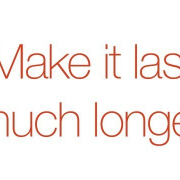Presenting data – high impact presentation
No matter what kind of presentation you have to give – presenting a project, the latest sales figures – data and facts are an important part of any presentation. But if you don’t show the right data to the right people you are wasting our time. Creating a high impact presentation is key to convince your listeners. Presenting data is part of this.
Our world is data-driven. We can measure, calculate and foresee almost everything. If we have specialized knowledge about a subject, it will be hard to speak to people who don’t have this information. If we love what we are doing it becomes harder to think in other peoples minds.
Here are a few tips on presenting data and giving a high-impact presentation.
Care for colors
We all use given formatting in PowerPoint or keynote to color our charts. We do this without thinking about it.
We all use given formatting in PowerPoint or keynote to color our charts. We do this without thinking about it.
One of the strongest assets of storytelling is the use of the color gray plus one action color.
By using standard formatting, we steal the storytelling effect from our audience.
It’s better to use one action color to emphasize the most important parts. Use the gray to move unnecessary information into the background.
People might watch your presentation later on a tablet or smartphone. Keep your slides easy and straightforward.
Words are important
Good visualization doesn’t need words. Nevertheless, the use of proper wording is significant.
Very often I see slides with it meaningless title: something like SALES as a headline.
Try to use a title that tells the message of your slide.
For example, SALES RISING – BUT NOT ENOUGH
Avoid old school
I still see presentations, reports, and analysis presented in an old fashion style like 20 years ago.
They talk about too many details and use too many slides. Fact is that our attention spans are declining. Audiences will only perceive 2% of all your information.
Important: focus on the most relevant information and put your message in the center of your speech.
Turn it around. Begin with the end.
We all trained to use a classic structure for our presentations: we give some background information, find a conclusion and finally on page 43 offer a solution.
By doing so, you lose the attention of your audiences. I don’t have to mention that this is not a storytelling approach.
How to do it better: Give your solution first, come to a conclusion and finally show them what you have found out. (The reason why your solution makes sense.)
Extra tip: Always end on your message. Even on a single slide. You might already be familiar with my repetitive wording. I cannot say this often enough: Message – Explanation – Message.
Talk to their heart
People are more willing to accept a new solution if you speak to their head and their heart at the same time.
Data, facts, and figures are used to activate the brain. But when you talk about how your solution will impact daily life, change the company, get more leads and better results you will need some human touch.
Tip: When presenting only figures use a picture in the background or next to your figures the will show the impact.
Conclusion
In any presentation data and figures are an essential asset. Use these tips and surprise your audience with a high impact presentation and presenting data the right way.









